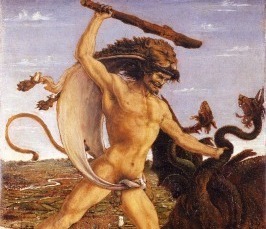Rudiments and Revenants: Warburg, Darwin and the Biology of Gesture
Research Seminar
- Online event via Zoom and on site (previous registration)
- Date: Dec 13, 2021
- Time: 02:00 PM - 04:00 PM (Local Time Germany)
- Speaker: Matthew Vollgraff
- Contact: freiberg@biblhertz.it

Charles Darwin was hardly the first scientist to study the expressive movements of the body, yet his 1872 book on The Expression of Emotions in Man and Animals radically redefined “expression” for all those who came after. In his book, the naturalist stripped away layers of metaphysics and reduced human and animal behavior to purely biological and physiological factors. For Darwin, emotional gestures were neither intrinsically social nor communicative, but rather concentrated indicators of evolutionary change. By studying the expressions of the passions, one could even retrace lost behavior patterns from the earliest developmental stages of the human species.
Aby Warburg first encountered Darwin’s book in 1888. Over the course of his scholarly career, he applied the naturalist’s understanding of expressive movement as a primitive ‘survival’ to the visual history of European culture. Through a creative appropriation of Darwinian thought, the Hamburg art historian studied gesture as the medium of unconscious cultural memory, following the ‘pathos formulas’ of pagan antiquity as they re-erupted in artworks of the Italian Renaissance. By analyzing his reception of evolutionary thought – both with and against Darwin – this research seminar offers a new reading of Warburg’s understanding of history, demonstrating how the circulation of images between art and science enabled the conversion of expressive gesture into a fossil of deep time.
Matthew Vollgraff is a historian of art and science in modern Germany working at the intersection of aesthetics, anthropology, and the life sciences. He is a research associate at the Warburg Institute, London, where he is a member of the project Bilderfahrzeuge: Aby Warburg’s Legacy and the Future of Iconology. He received his PhD from Princeton University in 2019. He was a fellow in the research group Naturbilder at the University of Hamburg (2016–2018) and a guest doctoral researcher at the Center for Literary and Cultural Research (ZfL) in Berlin (2014–2016). His publications have appeared in the journals Grey Room, October, Oxford Art Journal and the History of Anthropology Review.
You will be able to follow this event both online, via Zoom with pre-registration through this LINK, and live on site after registration. Please write for the participation on site to: mara.freiberg@biblhertz.it
Scientific organization: Amir Saifullin